For over 20 years, many Japanese volunteers from the Japan International Cooperation Agency (JICA) have made a great effort to promote Vietnamese culture and tourism to the Japanese and improve community health in Vietnam, contributing to the development of this country. Among them are Niizeki Mihoko and Nakamura Masaya.
With a recommendation from JICA, we met Niizeki who is now working as a volunteer at the Vietnamese Women’s Museum. The Japanese girl surprised us with her thorough knowledge when describing exhibits in detail for tourists. Niizeki said that she has been keen on the volunteer work and sharing her experience and knowledge with others since she was a child. When she first saw the information about recruiting overseas Japanese cooperation volunteers on JICA’s website, Niizeki submitted an application and she was accepted. After attending a 70 day course on the Vietnamese language and work skills, she started working as a guide at the Vietnamese Women’s Museum in Vietnam in 2014. At present, she is also responsible for translating Vietnamese information on the exhibits and other documents into Japanese. She and her colleague are jointly building a website of the Vietnamese Women’s Museum in Japanese with the aim of further promoting Vietnamese culture to Japan. “When meeting Japanese tourists who said that Vietnam was a charming country and they wanted to learn more about this country, I felt that my job is very useful for promoting the Vietnamese culture to Japan,” said Niizeki..
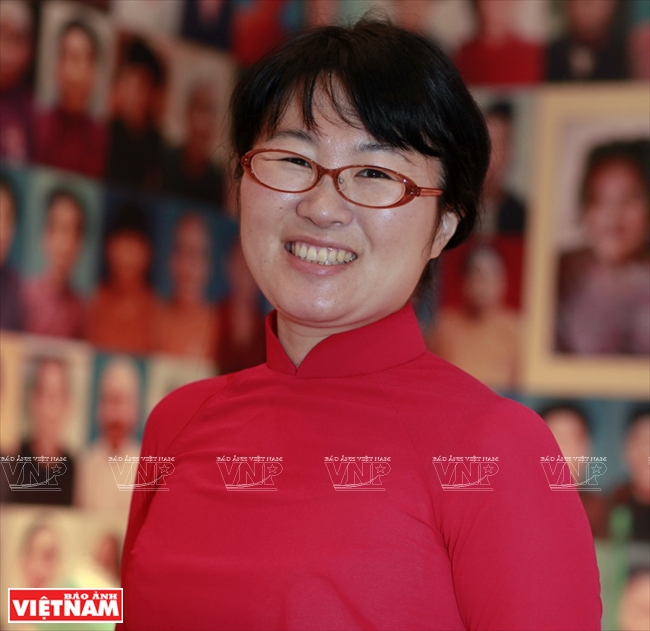
Niizeki Mihoko is a JICA volunteer working at Vietnamese Women’s Museum.
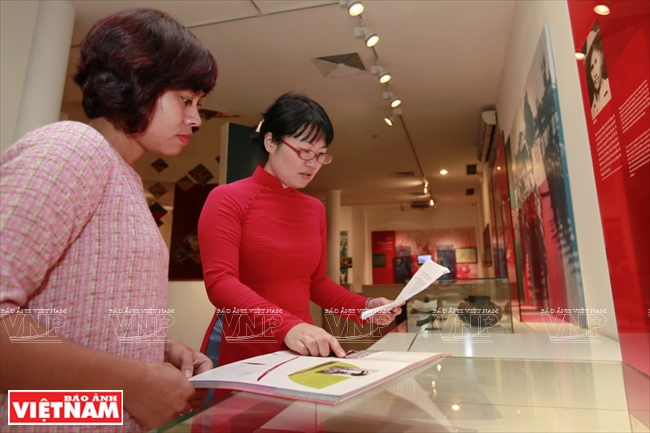
Niizeki Mihoko is responsible for translating Vietnamese information on the exhibits and other documents into Japanese.

Besides editing assistance for the Japanese website, Niizeki Mihoko
also serves as a guide at Vietnamese Women’s Museum.
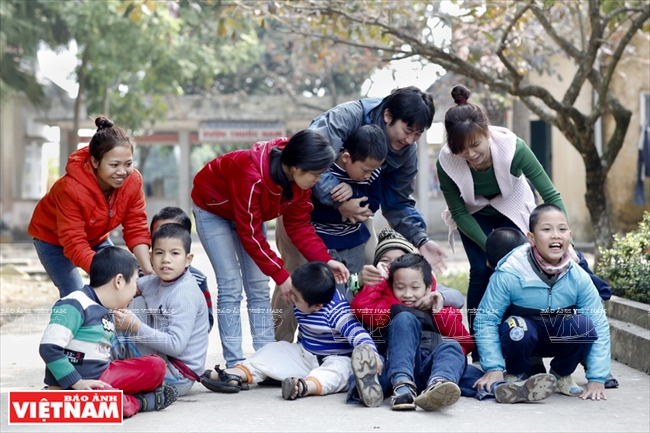
JICA volunteer Nakamura Masaya and Vietnamese colleagues take care of children
in an outdoor class at Thuy An Rehabilitation Centre for Handicapped Children.
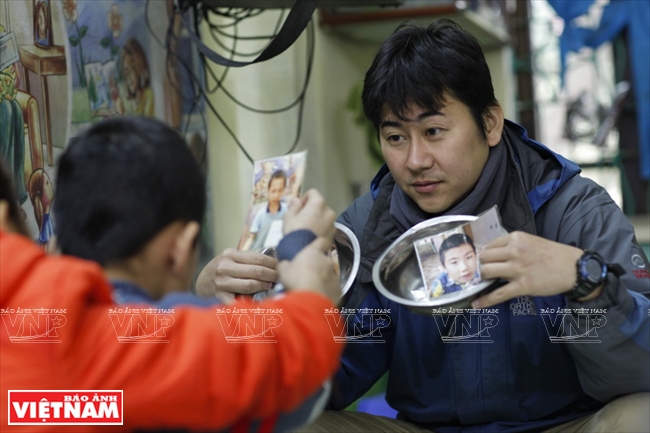
Nakamura Masaya takes care of Vietnamese disabled children.

He assists the centre taking care of and rehabilitating for handicapped children.
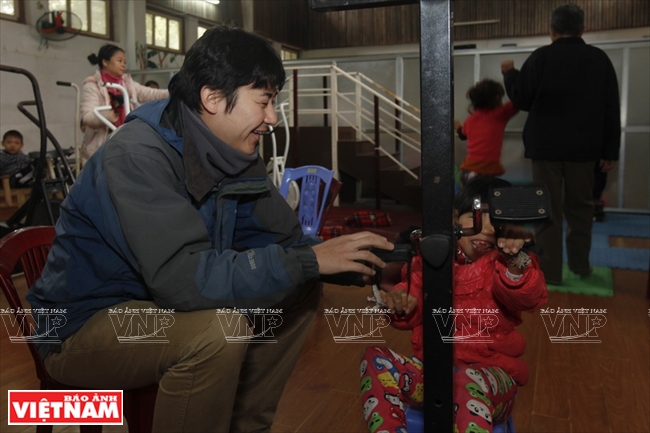
A rehabilitation lesson for handicapped children at the centre.
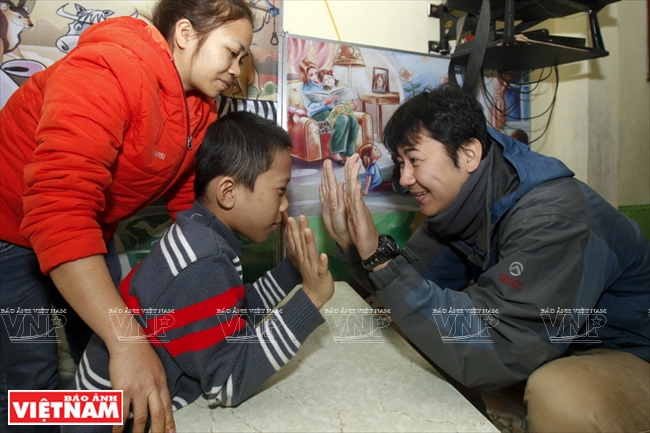
Nakamura Masaya’s experiences in Japan are useful for his jobs at the centre.
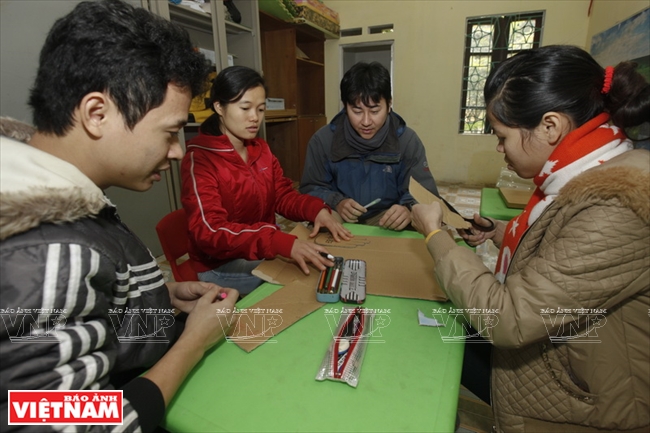
Beside directly taking care of the children, he also shares his experience to Vietnamese colleagues.
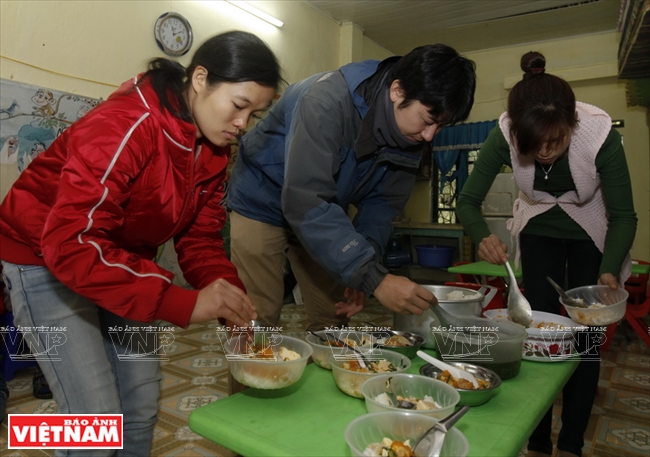
Nakamura Masaya and staff at Thuy An Rehabilitation Centre for Handicapped Children prepare meals for children.

He directly takes care of the children at the centre. |
To learn more about Japanese volunteers who have made endless endeavors to develop Vietnam, we called on the Thuy An Rehabilitation Centre for Handicapped Children in Ba Vi District, Hanoi to meet volunteer Nakamuara Masaya who now assists the centre’s teachers in the work of taking care of, nourishing, rehabilitating, educating and giving vocational guidance to disabled children in the northern provinces. Before working in Vietnam, he taught students with autism, developmental disabilities and behavioural disorders at the special education school of Yawata in Kyoto. With his experience, he used the method of Applied Behavioral Analysis (ABA) and images to help the disabled easily understand lectures. He told us, “I hope that my work is useful for the children and helps Vietnamese teachers improve their skills to teach the students effectively”.

(Mutsuya Mori, JICA’s Chief Representative in Vietnam)
|
"The programme of overseas Japanese cooperation volunteers officially began in Vietnam in 1995. With the volunteers’ achievements in the education sector which are highly appreciated, the programme is expanding to other sectors like healthcare, local development, education and auxiliary industries."
|
Story: Ngan Ha - Photos: Viet Cuong